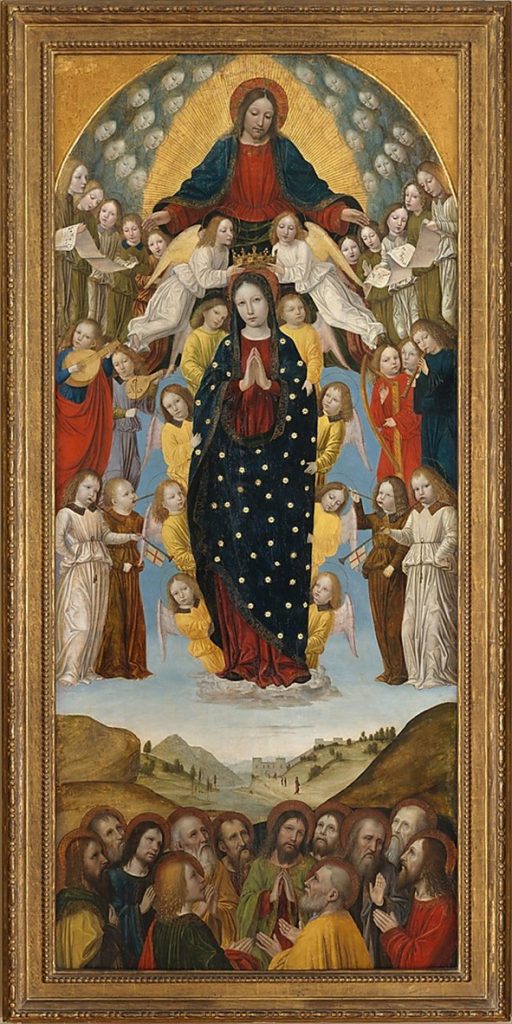The last mention of Our Lady is contained in the Acts of the Apostles. It shows Mary with the disciples in prayer in the Upper Room and awaiting the Holy Spirit. In Holy Scripture there is no information about the assumption, nor the death of Mary.
According to tradition (the Apocrypha and mystical visionaries) the assumption of Mary took place in the year 48 after Christ. The apostles gathered in Jerusalem to be with the Mother of God in her last moments. At the time of her falling asleep they saw a choir of angels singing. The body placed into a tomb in the Garden of Gethsemane. Saint Thomas was not with them, who after evangelising India, had appeared after three days. At his request the tomb was opened, but the body was not found, only the shroud in which it had been wrapped. In the air there hung the fragrance of flowers. Everyone understood that Jesus had taken His Mother into heaven together with her body.
The solemnity of the assumption of the Blessed Virgin Mary was already celebrated in countries of Europe in the fifth century. The Fathers of the East wrote about the mystery of the assumption. Saint John Damascene in the eighth century recalls Empress Pulcheria living in the fifth century, who built a church to honour the Mother of God in Constantinople and requested bishop Juvenal of Jerusalem for a relic of Our Lady. Juvenal wrote that such relics do not exist, since the body of Mary was taken into heaven, “as we know from ancient and very reliable accounts”.

This belief was reflected in paintings and sculptures, in which the apostles look at the Theotokos being lifted up. Artists very often present Mary lifted up between earth and heaven – her feet only a little above the earth. This is a wonderful portrayal of Marian theology: Our Lady is human, but in her extraordinary privilege stood between heaven and earth. Mary occupies a place after Christ and opens a long procession of those who will someday rise to eternal life.
The theological truth of the assumption of the Blessed Virgin Mary was officially defined as a dogma in 1950 by Pius XIII.
“We announce, declare and define as a dogma the truth revealed by God that the Immaculate Mother of God, the ever Virgin Mary, after completing her earthly life was, body and soul, taken to heaven . . .”.
This means that the Mother of Jesus, directly after the end of her earthly life, had the joy of seeing the Holy Trinity, to whom she was closer than any person. We should look on the assumption of Mary so as to realise the truth that earthly life is only a fragment of our existence before passing to eternity. By the example of Our Lady, we should behave according to God’s commandments and be aware of even the smallest evil, so as to now, here on earth, by all means belong to Christ, and at the end of time to live in the kingdom of heaven already prepared for us.